PDF chapter test TRY NOW
Gynoecium:
The female part and innermost whorl of the flower which is made up of carpels is known as gynoecium.
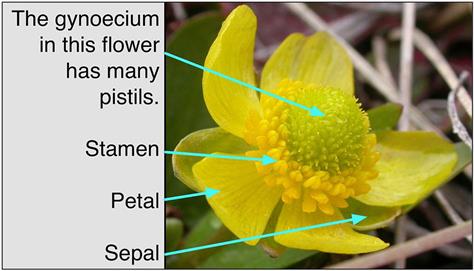
Gynoecium
It consists of three parts:
- Ovary - The ovary is the swollen part at the base of the carpel. It is a structure in which ovules are present.
- Style - The style is a narrow tubular structure which acts as a passage for the entry of male gametes into the ovary.
- Stigma - The stigma is a disc-like structure that is present at the top of the carpel and helps in pollination.
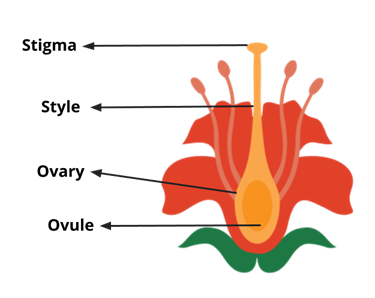
Structure of gynoecium
Formation of female gamete - Megasporogenesis:
- The ovules are attached to the wall of the ovary with the help of placenta.
- The placenta holds each ovule with the help of a stalk called funicle.
The ovule is made up of three parts:
- Integuments
- Nucellus
- Embryo sac
- The nucellus (nutritive) is the essential part of the ovule, surrounded by two integuments and has a micropyle opening.
- The upper end of the ovule containing the opening, micropyle is known as the micropylar end.
- The opposite end of the ovule at the bottom is known as the chalaza or the chalazal end.
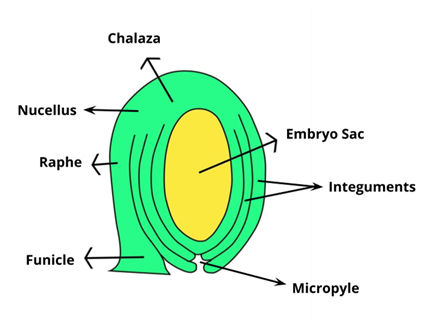
Structure of ovule
- One cell from the nucellus undergoes differentiation to form the female germ cell called the megaspore mother cell in an immature ovule.
- At this stage, the ovule is known as megasporangium.
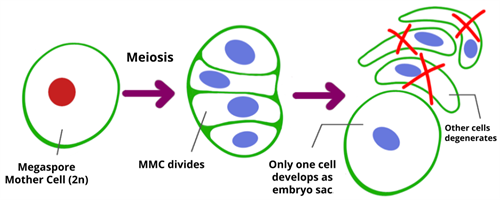
The formation of female gametes
- The megaspore mother cells are diploid cells that undergo meiotic divisions to produce haploid megaspores.
- Of the four haploid megaspores three of them usually degenerate and one of them develops into the embryo sac, also known as female gametophyte (megagametophyte).
Embryo sac:
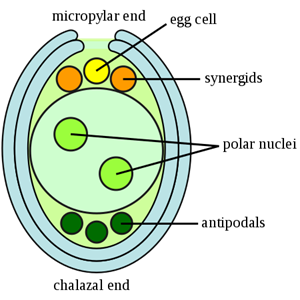
Embryo sac
The embryo sac of the ovule contains seven cells and eight nuclei located within the nucellus. Out of the seven cells, three cells are located at the micropylar end and form the egg apparatus. The remaining three cells are at the chalaza end form the antipodal cells. The remaining two nuclei are called polar nuclei and are present at the centre. In the egg apparatus, one forms the female gamete or egg cell, and the remaining two cells are the synergids.
Reference:
https://commons.wikimedia.org/wiki/File:Embryosac-en.svg
https://commons.wikimedia.org/wiki/File:Ovule_morphology_anatropous.svg
https://commons.wikimedia.org/wiki/File:Ovule_morphology_anatropous.svg
https://upload.wikimedia.org/wikipedia/commons/thumb/b/b8/Gynoecium_diagram_for_Simple_wikipedia.jpg/1024px-Gynoecium_diagram_for_Simple_wikipedia.jpg
https://upload.wikimedia.org/wikipedia/commons/thumb/6/6e/ABC_Model.svg/512px-ABC_Model.svg.png
https://upload.wikimedia.org/wikipedia/commons/thumb/4/4a/Megasporogenese.png/1024px-Megasporogenese.png
